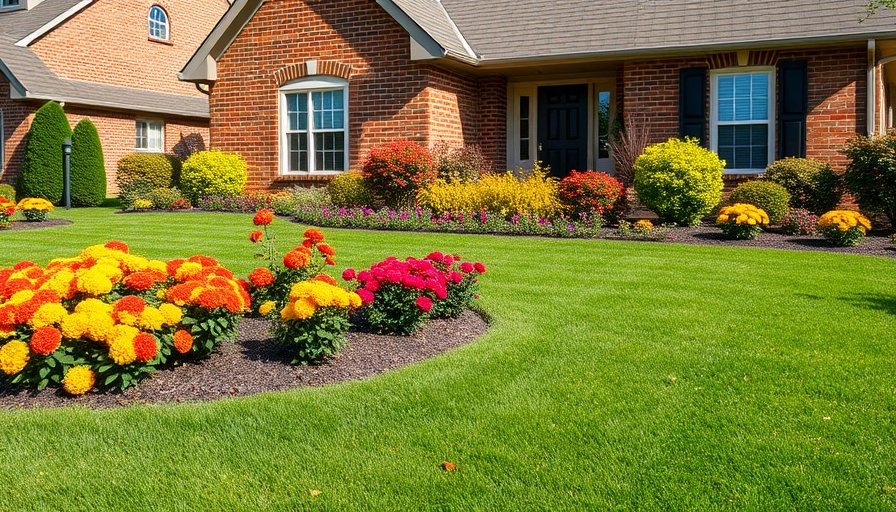
Winter's Double-Edged Sword for Your Landscape
Winter offers a unique beauty to our landscapes, yet it also poses significant risks to our trees and shrubs. The perception of a peaceful snowy scene can quickly fade when one considers the harsh realities of freezing temperatures and potential damage. From frost heave to animal browsing, our plants are at risk, particularly the young and newly planted varieties. As such, proactive care is essential to ensure that our green companions survive and thrive through the winter months.
Why Winter Protection Is Necessary
Understanding the multifaceted threats of winter is crucial. According to Borst Landscape & Design, environmental stressors such as low temperatures, heavy snowfall, and cold winds can lead to a range of issues including frost cracks, desiccation, and root damage. These seasons can be particularly taxing for species vulnerable due to their hardiness zone. Discovering how to safeguard them is not just about preservation—it's about promoting their health for a robust spring growth.
Timing is Everything: Winter Prep Necessities
The timing of winter preparations can't be overstated. The goal is to protect your landscape before the ground freezes, aiming for late fall between October and November. Creating a well-timed winter protection strategy positions your plants to transition smoothly into dormancy and withstand harsh conditions.
Effective Techniques to Protect Trees and Shrubs
Proper Mulching for Root Protection
Mulching is a critical aspect of winter protection. Just a few inches of organic mulch helps insulate roots and moderate soil temperature. As highlighted by experts, a thick layer of mulch not only retains moisture but also minimizes the risk of frost heave. Use shredded bark or wood chips and maintain a safe distance from tree trunks to promote health.
Burlap Wrapping and Physical Barriers
For younger trees and evergreens, wrapping with burlap or other breathable materials can provide physical protection against desiccation. Avoid plastic, as it can trap moisture and create a fungal environment. Wrap or secure appropriately to promote growth while shielding against the elements.
Prioritizing Watering Practices
Ensuring that your trees and shrubs are adequately watered before the onset of cold is crucial, particularly in dry autumns. Dehydrated plants are much more vulnerable to the winter's harsh effects. This strategy especially applies to evergreens, which continuously transpire even in winter.
Lessons from Cold Climates: Broader Perspectives
Looking beyond local practices, insights from the Midwest provide additional strategies for winterizing trees and shrubs. The University of Minnesota Extension highlights the dangers of unaddressed cold temperatures, such as the necessity of mulching and proper watering to ensure root survival. Strategies to mitigate de-icing salt exposure from roads and sidewalks can further preserve your landscape health.
Animal Damage: Securing Against Browsers
Winter months often force animals like deer and small rodents to search for food, leading to plant damage. Employing tree wraps and fencing, as suggested by both Borst Landscape and Proven Winners, can serve as effective deterrents against browsing. Repellents and barriers are efficient ways to prevent damage without resorting to harmful chemicals.
Preparing for Future Growth: Spring Awaits
Ultimately, the winterizing efforts you invest today lay the groundwork for a vibrant spring. By taking time to implement proper winter protection techniques, you not only safeguard your landscape's aesthetic but promote healthy growth for years to come. Choose the right methods, monitor soil conditions, and act decisively to protect your landscape against winter's harsh grip.
For specialized assistance with winter preparations, consider enlisting the expert guidance of local professionals familiar with the unique challenges of your area. Ensure your beloved trees and shrubs are ready to withstand the elements and emerge bright and beautiful come spring.
 Add Row
Add Row  Add
Add 




Write A Comment